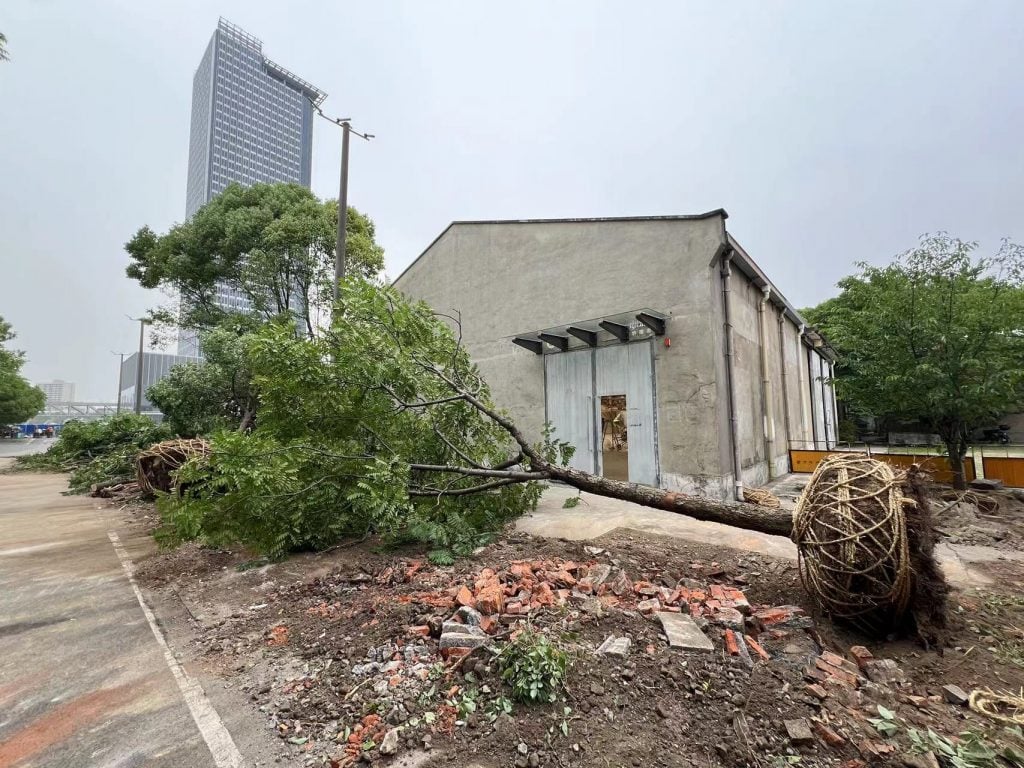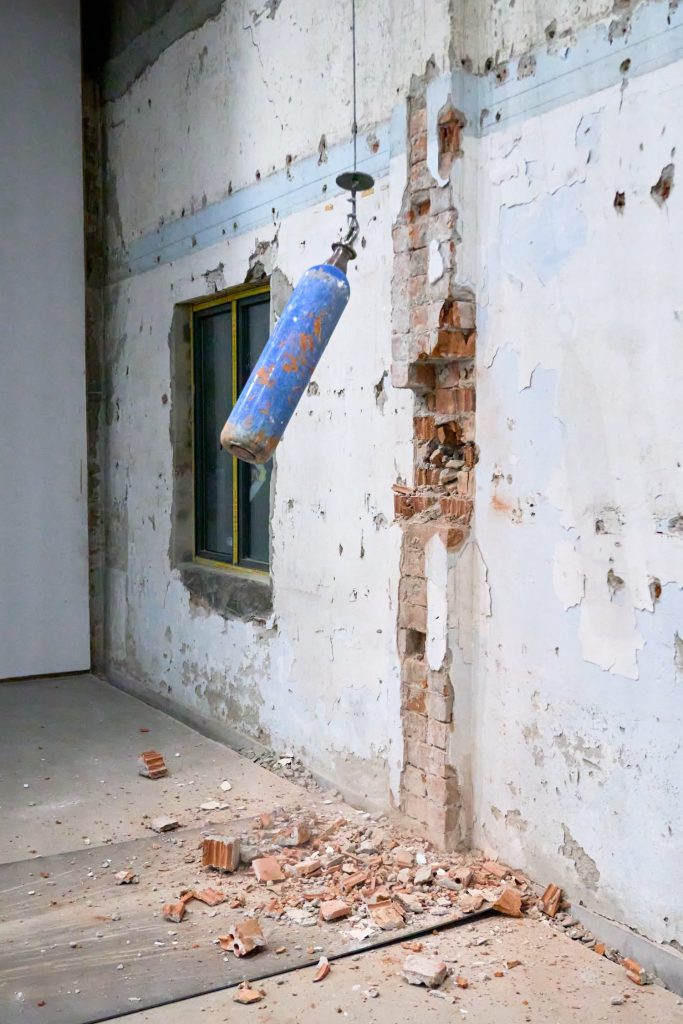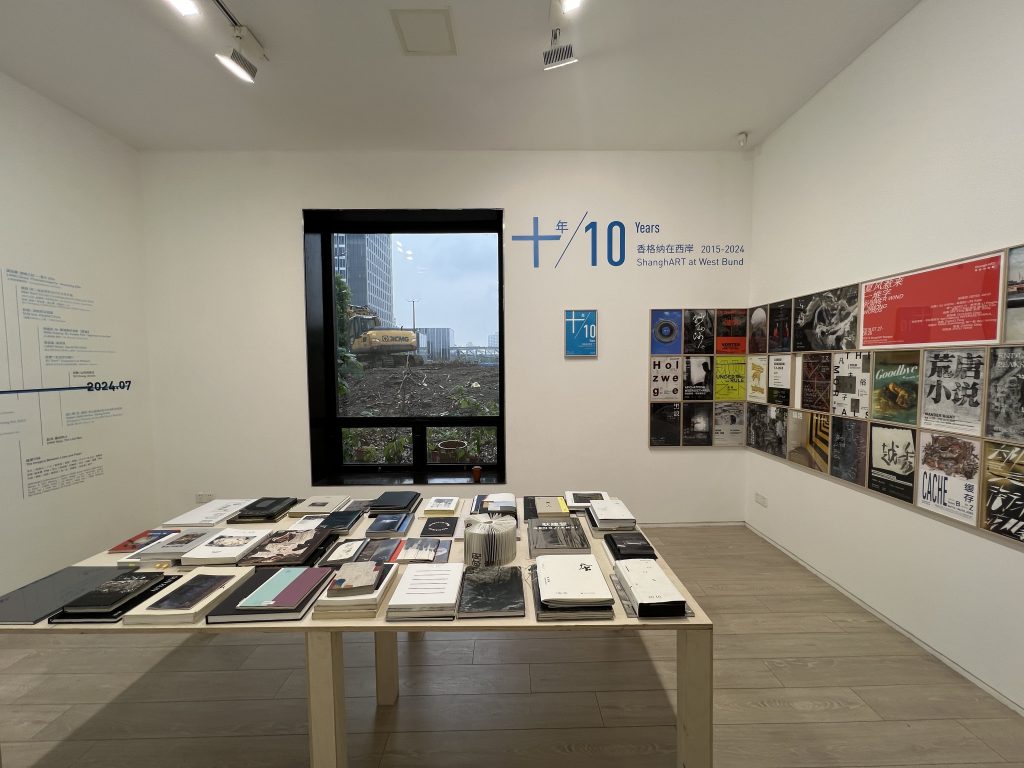Market
Goodbye, West Bund: Redevelopment Efforts Drive Out Shanghai Galleries
After 10 years as an arts hub, tech firms are moving in. Artists and dealers are dispersing throughout the city.

After 10 years as an arts hub, tech firms are moving in. Artists and dealers are dispersing throughout the city.

Cathy Fan

This article originally ran in The Asia Pivot, Artnet Pro’s biweekly members-only newsletter providing mission-critical analysis, insights, and exclusive intelligence on developments in Asia’s art markets, with a focus on business opportunities and challenges. Subscribe here to receive it directly to your inbox.
Last month, the artist Zhang Peili suspended a blue oxygen tank from the ceiling of the Pond Society’s space in Shanghai’s West Bund area for a four-day exhibition titled “Deadline.” An overhead motor dragged the tank around the nonprofit gallery until the show’s final two hours, when it began smashing it into the walls of the gallery—a noisy, violent farewell to the art district. After about 10 years as a hub for culture in Shanghai, much of West Bund is being demolished by government officials as part of a redevelopment program.
ShanghArt, which was established in 1996 as one of China’s earliest galleries for contemporary art, also held a farewell exhibition to mark its decade-long run in West Bund. At its opening, visitors could see ruins and construction sites from the gallery’s windows as the sun set, casting a sense of uncertainty and melancholy on the nearby towers. Others being forced to relocate include Don Gallery, Aike Gallery, Part Group, and artist Ding Yi’s studio.

A still photo of Zhang Enli’s new piece, Demolition, at Pond Society in Shanghai. Courtesy Pond Society.
While West Bund’s time as an art district was relatively brief, it was not uneventful, with dramatic highs and lows. The first chapter of the story was written by Budi Tek, the Chinese-Indonesian entrepreneur and collector who opened the Yuz Museum there in 2014. Housed in a former aircraft hangar, it brought attention to Shanghai’s contemporary art scene and set the stage for further development. The West Bund Art and Design fair arrived in 2015, prompting the temporary conversion of nearby warehouses into art spaces. Very quickly, more artists, art dealers, and other groups moved in, like MadeIn, Kiang Malingue, the Long Museum, the Shanghai Center of Photography, and the New Century Art Foundation.
In 2018, the West Bund Art and Design Fair expanded significantly with a new hall that could accommodate more exhibitors. Optimism in the area peaked in 2019 with the openings of Qiao Zhibing’s swanky private museum, Tank Shanghai, and the state-owned West Bund Museum (designed by David Chipperfield) signing a five-year partnership with the Centre Pompidou (that was renewed in 2023). At the time, many quite reasonably compared West Bund to New York’s “Museum Mile” or London’s South Bank. A newly constructed Art Tower promised to be an enhanced version of Hong Kong’s H Queens building, hosting international galleries and serving as an art trading center. West Bund seemed unstoppable.
However, the Covid-19 pandemic and three years of restrictions halted this rapid progress. Although China’s borders reopened in the spring of 2023, its economic outlook remained grim, and its art market struggled. Doubt and uncertainty about the future loomed.

An installation view of ShanghArt’s 10th-anniversary show in West Bund. Courtesy ShanghArt.
Last year, the trailblazing Yuz Museum relocated to a town an hour from downtown Shanghai. The Shanghai Center of Photography permanently closed at the end of the year. The Art Tower was sold to the tech giant Alibaba, which will use it as part of its Shanghai headquarters. West Bund is now filled with high-rise buildings, resembling high-tech industrial parks in other cities, with ads for AI overshadowing the once-idealistic vision of an arts district.
This has happened repeatedly around the world, of course—art groups transform a neglected area, only to be displaced later—but in West Bund it has occurred with brutal “China speed.”
The departing galleries are searching for new locations—possibly the bustling central Bund area or the emerging and trendy Suzhou Creek, where the new Fotografiska Museum Shanghai is located. Many in the art world want to establish a new art cluster somewhere in the city, but from a real-estate perspective, that is an expensive proposition.
A handful of museums have stayed in West Bund, but its once-vibrant scene has now been dispersed. Stay tuned to The Asia Pivot for what comes next.